
Laserline team lands first prize at AKL
source:Optics.org
release:Nick
keywords: Laserline high-power diode laser
Time:2018-05-13
A team from the high-power diode laser system vendor Laserline has scooped first prize in the biennial Innovation Award Laser Technology - thanks to its development of a multi-spot module to improve laser-based brazing techniques.
Axel Luft, Laserline’s sales manager for the global automotive market, picked up the award and a prize of €10,000 on the team’s behalf during last week’s Arbeitskreis Lasertechnik (AKL) event, held as usual in Aachen, home city of the Fraunhofer Institute for Laser Technology (ILT).
Developed in collaboration with auto giant Volkswagen and scanning technology firm Scansonic, the multi-spot module is said to offer the advantage of continuously adjustable and robot-controlled power distribution. That provides higher-quality, and more cost-effective joining techniques with diode lasers in industrial mass production, stated the 8-strong international judging panel.
Triple-spot module
The new process looks to solve issues with laser brazing of hot-dip galvanized (HDG) steel sheets, which offer improved resistance to corrosion but tend to suffer from lower joint quality – including spatter effects when laser-brazed.
In 2016, Laserline, Volkswagen, and Scansonic assembled a triple-spot module including an optical camera system and integrated robot control for HDG brazing on the auto maker’s series production line.
They explain that the module offers the advantage of continuously adjustable power distribution between the main spot and the front spots, as well as between the leading front spots. “Therefore, it is now also possible to switch off front spots, for example in flexible lines for cars with EG (electro-galvanized) coating, or to adjust the space between the front spots,” added the team, which has now applied the same approach to aluminum welding.
“The technology is bound to penetrate a large number of manufacturing processes, and thereby adds a new and cost-effective member to the family of beam-forming optical systems for material processing with diode lasers in industrial mass production,” noted a release from the AKL organizers.
Picosecond printing
Luft and his co-workers beat a German consortium featuring LIMO, Edgewave, Schepers, ILT, and led by printing and finishing firm Saueressig, into second place. They had developed a “multi-parallel” ultrafast laser system capable of machining large-area parts – typically a weakness of the high-precision approach.
The system is based on a high-efficiency (>90%) multi-spot diffractive optical element (DOE) and a multi-channel acousto-optic modulator. That setup provides for multiple picosecond-pulsed laser beams, machining with individual beam switching, and modulation at a data rate of 6 MHz.
Integrated within an ultra-high-precision cylinder engraving system, 16 spots were generated and synchronized with a precision better than 2 µm, and a beam delivery positional precision of +/- 200 nm.
“This system has been realized and industrially integrated in a commercial roller engraving system for the manufacturing of high-precision embossing rolls,” states the team, which was represented by Saueressig’s Gerald Jenke at the award ceremony.
Flexible beam control
In third place was an all-Spanish team, led by laser materials processing firm Talens Systems, that has developed a highly flexible beam control system for laser heat treatment and similar applications.
Called “RAIO DSS”, the approach is said to provide energy density patterns compatible with a fully prescribed beam energy deposition distribution, thus allowing homogeneous laser treatment of geometrically tricky areas including corners under full control.
The team also developed new control software to overcome problems with high oscillating frequencies often found in commercial software, which is typically limited to offering pre-fixed scanning patterns with simple geometrical shapes and low oscillation speeds.
States the team: “The RAIO DSS solution has been initially developed and commercialized on the basis of customized laser hardening workstations for different car engine components with convoluted geometry such as crankshafts, new-technology camshafts and different types of powertrain gears, but is rapidly developing to provide innovative solutions for other laser processing applications.”
- RoboSense is to Produce the First Chinese Multi-beam LiDAR
- China is to Accelerate the Development of Laser Hardening Application
- Han’s Laser Buys Canadian Fiber Specialist CorActive
- SPI Lasers continues it expansion in China, appointing a dedicated Sales Director
- Laser Coating Removal Robot for Aircraft
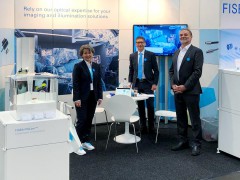 FISBA exhibits Customized Solutions for Minimally Invasive Medical Endoscopic Devices at COMPAMED in
FISBA exhibits Customized Solutions for Minimally Invasive Medical Endoscopic Devices at COMPAMED in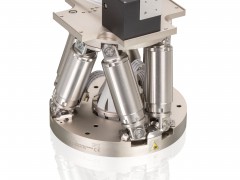 New Active Alignment System for the Coupling of Photonic Structures to Fiber Arrays
New Active Alignment System for the Coupling of Photonic Structures to Fiber Arrays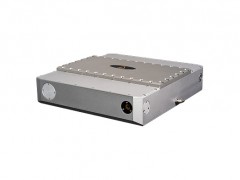 A new industrial compression module by Amplitude
A new industrial compression module by Amplitude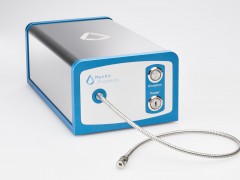 Menhir Photonics Introduces the MENHIR-1550 The Industry's First Turnkey Femtosecond Laser of
Menhir Photonics Introduces the MENHIR-1550 The Industry's First Turnkey Femtosecond Laser of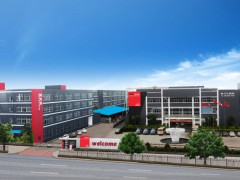 Shenzhen DNE Laser introduced new generation D-FAST cutting machine (12000 W)
more>>
Shenzhen DNE Laser introduced new generation D-FAST cutting machine (12000 W)
more>>

